Nowadays architecture has to take into consideration so many parameters , not only the aesthetic and the functionality but also the sustainability. Sustainable architecture is about using strategies and techniques that reduce the buildings negative impact on the environment.

BASIC CONCEPTS
There are many basic concepts concerning this topic:
Three pillars:
socio-cultural; socio-economic, environmental.

SOCIOCULTURAL 
SOCIO-ECONOMIC 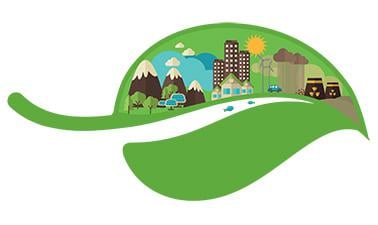
ENVIRONMENTAL
Green and Circular Economy:
Green economy: it is defined as low carbon, resource efficient and socially inclusive. In a green economy, growth in employment and income are driven by public and private investment into such economic activities, infrastructure and assets that allow reduced carbon emissions and pollution, enhanced energy and resource efficiency, and prevention of the loss of biodiversity and ecosystem services.
Circular economy:

In the linear economy, raw natural resources are taken, transformed into products and get disposed of. On the opposite, a circular economy model aims to close the gap between the production and the natural ecosystems’ cycles – on which humans ultimately depend upon.
This means, on one hand, eliminating waste – composting biodegradable waste or, if it’s a transformed and non-biodegradable waste, reusing, remanufacturing and finally recycling it. On the other hand, it also means cutting off the use of chemical substances (a way to help regenerate natural systems) and betting on renewable energy.
Four operational principles:
- impact of humans on natural systems.
- moderated use of renewable resources
- use of non-renewable resources must be compensated by the use of renewable ones.
- the emissions must not exceed the capacity of the receivers.
Life-Cycle Assestment :
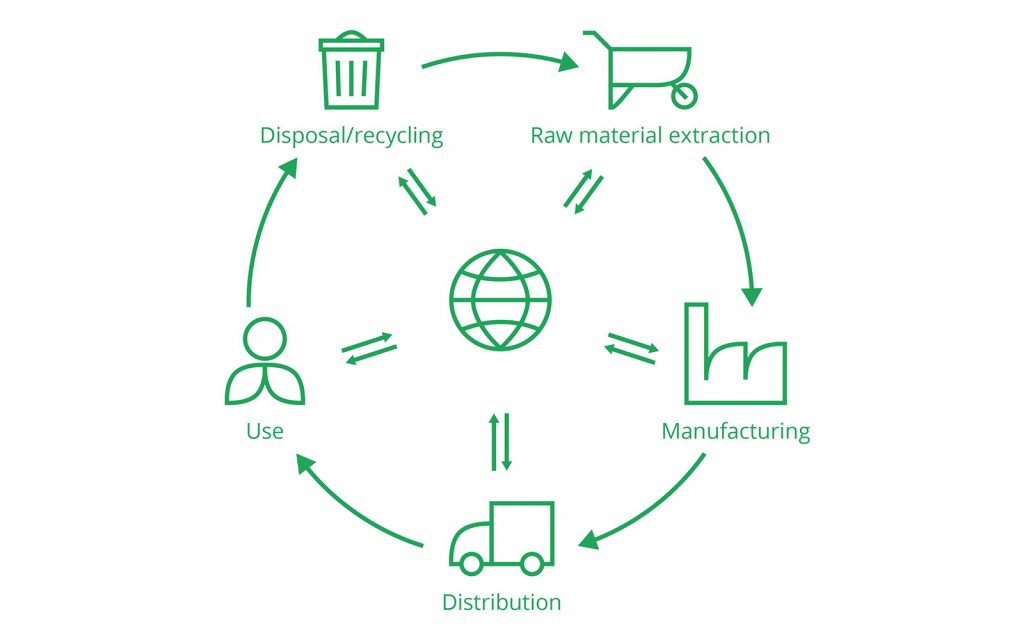
Life cycle assessment (LCA) is the factual analysis of a product’s entire life cycle in terms of sustainability. Every part of a product’s life cycle can have an impact on the environment in many ways. With LCA, you can evaluate the environmental impacts of your product or service from the very first to the very last or from cradle to grave.
ECOLOGICAL FOOTPRINT:
The Ecological Footprint measures an individual or a population’s demand for plant-based food and fiber products, livestock and fish products, timber and other forest products, space for urban infrastructure, and forest to absorb its carbon dioxide emissions from fossil fuels.On the supply side, a city, state, or nation’s biocapacity represents its biologically productive land and sea area, including forest lands, grazing lands, cropland, fishing grounds, and built-up land.The Ecological Footprint can be calculated for a single individual, city, region, country and the entire planet.
3 R:
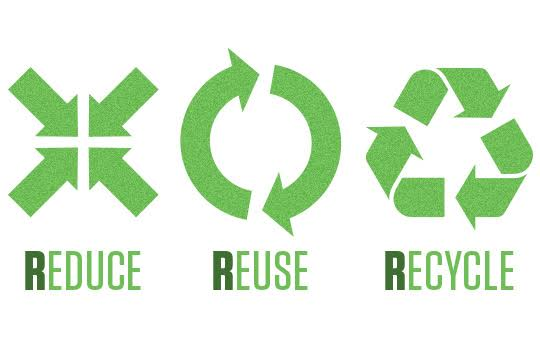
Green:
Green means to continually improve upon the manner that resources are utilized that results in reduced impacts to human health and the environment and is done without sacrificing the current and future needs of our world.
Eco- /Eco-friendly:
Definition and Meaning. … Eco-friendly items and materials are defined as being not environmentally harmful. These products promote green living or green manufacturing methods that lessen the amount or types of resources used. In short, eco-friendly products help the earth, not cause it harm
Bio-:
Bio can refer to ingredients that are added in the manufacture or preparation of food and present in the final product in modified form with biological activity. Bioingredients can be obtained from marine and terrestrial sources. We can also talk about bio-architecture.
Km0:
Zero km food (0 km food) is a concept which few years ago first appeared in Italy. It denotes the food produced, sold and eaten locally – the food which travelled zero kilometers
Permaculture:
Permaculture is a design philosophy that focuses on designing human systems based on natural ecosystems. It is based on the notion that we often take for granted where our food comes from, along with our water sources and building materials. Permaculture really boils down to meeting our goals while using less energy.
Low-tech:
Technologically simple or unsophisticated low-tech industries.
Passive:
“Passive design” is design that works with the local climate to maintain a comfortable temperature in the home. Good passive design should reduce or eliminate the need for additional heating or cooling depending on your location and often relies on an active occupant to work properly.
nZEB: (nearly zero energy building)
Nearly zero-emission building (NZEB) means a building that
- has a very high energy performance, meeting specific thresholds for its primary energy use
- the very low amount of energy still required is fully covered by energy from renewable sources generated on-site, from a renewable energy community or from a district heating and cooling system using only renewable energy and waste heat
- the net non-renewable primary energy use shall be maximum zero
- must not cause any on-site carbon emissions from fossil fuels
Passive house:
Passive House is a highly energy efficient building standard that also promotes indoor comfort and acoustic insulation. … “passive house” was one of the pioneering concepts for building low-energy houses and is today a leading building standard.
HEALTHY BUILDINGS
A building can be classified as healthy or as sick based on its relationship with its inhabitant, therefore we can talk about two opposite concepts:
Psychological aspect:
Which means the positive relationship between the nature and the surroundings with the nervous functions, that associate a specific place to emotions of serenity and well-being. (proportions- chromatic atmosphere – texture – exterior views… )
Sick Building Syndrome:
When physical and psychological unwellness is noted in its inhabitant such as skin reactions,
headaches, nausea, and tiredness… . In fact this symptoms can be explained by biological, chemical, physical and psychological factors.
CLIMATE / HUMAN BEING
The human bieng is largly affected by the environment where he lives especially by the climate that surrounds him( temperature, radiation, movement of the air, relative humidity…), therefore humans are thermal machines that transform chemical energy into mechanical energy due to the metabolism.
In the way,the environmental conditions affect the buildings that affect the humans, these conditions are: temperature, sunshine, wind, rainfall, snow, humidity and pressure.
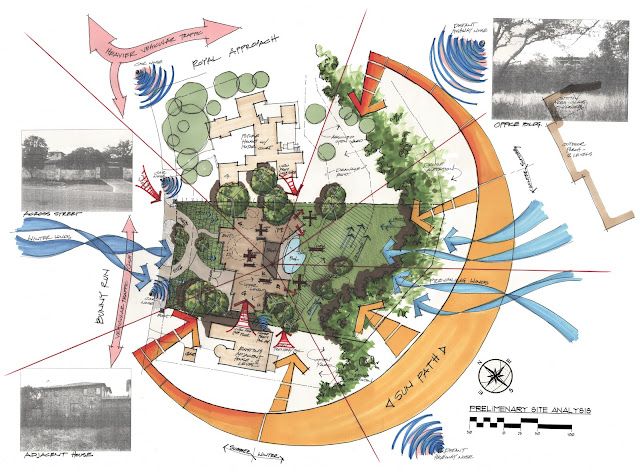
SUSTAINABLE DESIGN
Bio-architecture:
The design and construction of buildings in an ecologically-friendly manner that reflect structures found in nature.
Characteristics:
- attention to insulation and thermal inertia
- passive installations
- water saving and recovery
- healthy materials
- acoustic and sunlight control
- natural lighting and ventilation
- open spaces.
Bioclimatic architecture:
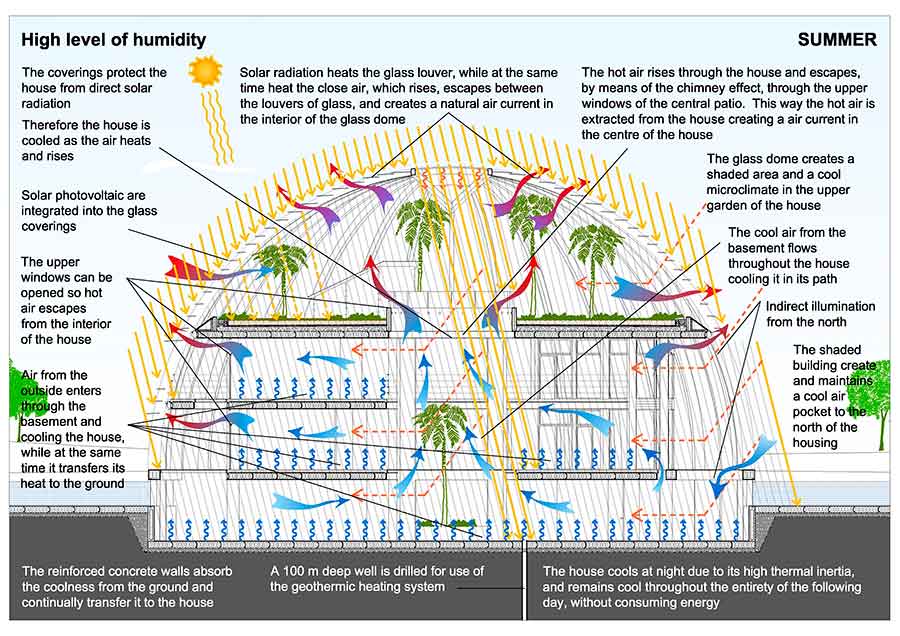
Bioclimatic architecture is a way of designing buildings based on the local climate, with the aim of ensuring thermal comfort using environmental resources. They must also blend into their natural surroundings. This is nothing new, all you need to do is look at the shapes of roofs and the sizes of windows in different countries and regions.
The main aims of bioclimatic architecture are to create healthy, comfortable homes for the inhabitants of these buildings, while respecting the environment. To do this, it is essential to avoid using polluting materials, ensure the wellbeing of local biodiversity and make efficient use of energy, building materials, water and other resources.
As a consequence studying the constructiv techniques remains crucial.
MATERIALS
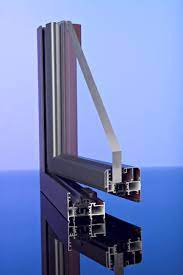
thermal bridge break carpentry 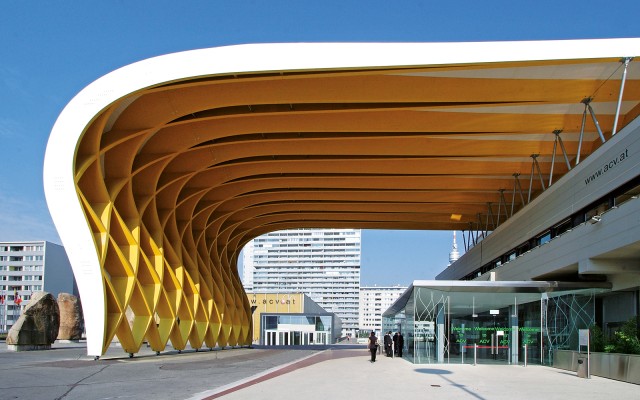
Glued laminated timber 
insulation panels natural cork 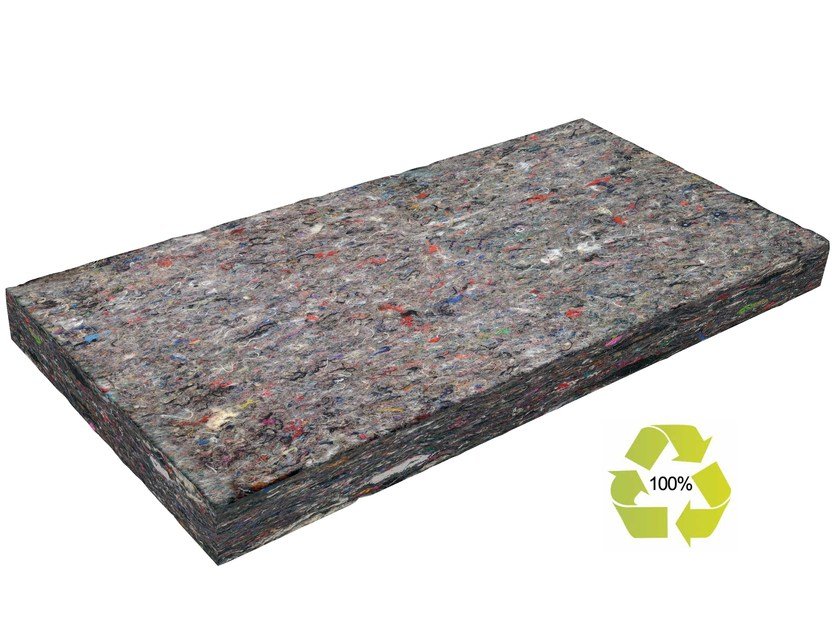
insulation panels recycled textie fibre 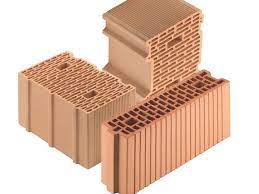
clay blocks 
Rammed earth wall
As a conclution Green architecture may be a dream come true for most ecologists and environmentalists but it also presents hindrance in the industrial world. This is a very difficult task, as it requires expenditure of many resources and investments. This is also one of the major problems that green architects have to face in order to fulfill the goal of reducing impacts of constructions, which can only take place by the help of deforestation that has caused notable Ozone Depletion. Besides, building green structures also costs more as special equipment has to be bought and maintained, because of which people are not yet drawn to this system. We should be careful with the use of “green” and sustainable as it can also imply w=very dangerous consequences on the planet too.
BIBLIOGRAHY:
https://www.rockwool.com/group/about-us/our-thinking/energy-efficiency/passive-houses/what-is-a-passive-house/
https://ec.europa.eu/energy/topics/energy-efficiency/energy-efficient-buildings/nearly-zero-energy-buildings_et
https://www.yourhome.gov.au/passive-design
https://www.merriam-webster.com/dictionary/low-tech
https://www.mensjournal.com/adventure/what-exactly-is-permaculture-w466984/
ZERO KM FOOD
https://www.researchgate.net/publication/324208734_Bioingredients_functional_properties_and_health_impacts#:~:text=Bioingredients%20are%20ingredients%20added%20in,from%20marine%20and%20terrestrial%20sources.
https://www.mcrsafety.com/blog/environmentally-friendly
https://www.era-environmental.com/blog/what-it-means-to-be-green
https://www.fmtn.org/Blog.aspx?IID=21
https://www.overshootday.org/kids-and-teachers-corner/what-is-an-ecological-footprint/
Life Cycle Assessment (LCA) explained
https://youmatter.world/en/definition/definitions-circular-economy-meaning-definition-benefits-barriers/
https://www.edx.org/es/course/environmental-studies-a-global-perspective
The Top 6 Sustainable Architecture Strategies for Public Building Design
https://www.engineerjobs.co.uk/news-and-advice/advantages-and-disadvantages-of-green-architecture
https://www.iberdrola.com/innovation/bioclimatic-architecture-passivhaus
https://www.convergencearch.com/bioarchitecture-an-introduction/#:~:text=Noun.%20(,reflect%20structures%20found%20in%20nature.